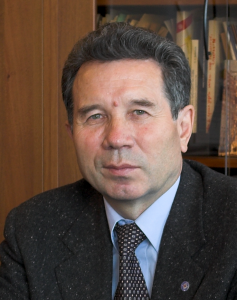 |
Vassilyev Stanislav Nikolayevich was born in 1946. In 1970 he graduated from the Kazan Aviation Institute named after A.N. Tupolev (USSR). Its scientific adviser was academician V.M. Matrosov, who organized in Irkutsk Institute of the Siberian Branch of the Russian Academy of Sciences (RAS). This institute is now called the Institute for System Dynamics and Control Theory named after V.M. Matrosov. In 1991-2006, the institute was headed by S. Vassilyev. In 2006-2016, S. Vassilyev headed the V.A. Trapeznikov Institute of Control Sciences of RAS, where he continues to work as the chief researcher, as well as a professor at M.V. Lomonosov Moscow State University.
Directions developed by S. Vassilyev: mathematical systems theory, nonlinear dynamics and control, artificial intelligence, intelligent control, multi-criteria decision-making. S. Vassilyev is the editor-in-chief of the journal “Automation and Remote Control” and the deputy editor-in-chief of the journal “Doklady RAS”. In 1997 he was elected Corresponding Member of the RAS and Academician of the RAS in 2006. S. Vassilyev is a laureate of the State Prize of the USSR in the field of science and technology (1984), laureate of the Prizes of the Government of the Russian Federation in the field of education (2012), and also in the field of science and technology (2013). |
Method of logical equations in mathematical systems theory
Abstract:
We propose some method of algorithmic synthesis of conditions sufficient for transferring properties from one mathematical model to another. This method is based on solving a special class of logical equations in some first-order logic language, which also is useful for knowledge representation and action planning in robotics.
The main novelty of the method is its high generality. In particular, the definitions of any pair of properties considered can differ from each other. Theorems obtained by this method make it possible to use wider classes of model relationships (coordinate and other mappings, etc.) for transferring the properties of models.
Examples of qualitative analysis of dynamic and algebraic models, for example, with applications in control tasks of groups of autonomous vehicles, are considered.